- To save a high-resolution file that is 6000x6000px, press ‘P’ while in live mode.
I seek to evoke warmth using code as my medium — Andreas Rau
In Concrete, Andreas Rau expertly accomplishes this goal despite the challenging subject matter: concrete is often regarded as a bland, lifeless material. Therefore, it’s difficult to imagine a more significant challenge in code-based art than imparting that material with movement, texture, and even warmth.
Andreas Rau is most well known for his genesis fxhash drop Loom, a collection that always surfaces in discussions about the top five projects in fxhash history. For his second release he drew inspiration from Norwegian architect Erling Viksjø (1910-1971), who designed the Government Quarter in Oslo, among other well known achievements.
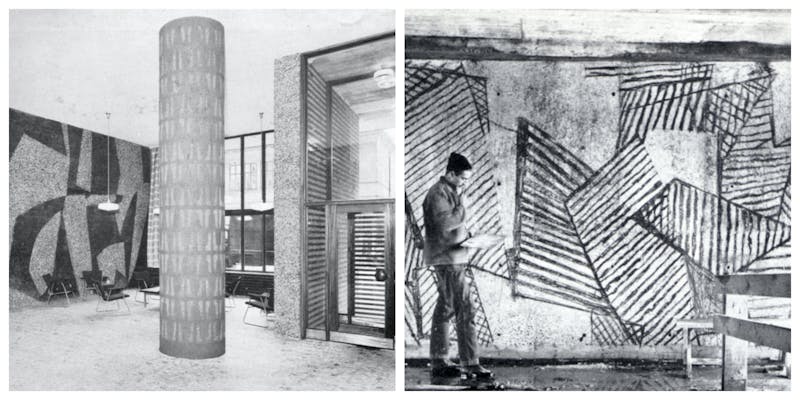
Erling Viksjø's work
Viksjø invited artists from different disciplines to help design the project. The goal was to soften modernist architecture through form and material. His signature material was a new mixture of concrete he called Naturbetong. This was made by filling a mold with small natural stones and then pouring in a thin mortar mixture. With further manipulation, the stones could be revealed to create patterns and images on the structure’s walls.
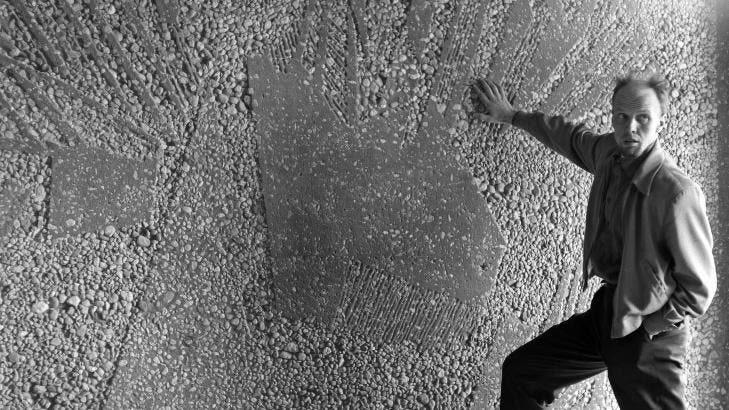
Carl Nesjar, artist collaborator of Viksjø's, on site
Andreas Rau has done an expert job in re-creating this effect, using the tools of code rather than mortar and stone. Much like the buildings of Viksjø, Andreas brings warmth to the subject material and creates an elegant array of diverse structures and palettes.
One output which captures some of these elements is #57. The textures and ridges of natural concrete are readily apparent, and one feels the tactile feedback of touching a concrete surface just by viewing the piece. The different textures and colors of stones revealed through the sandblasting technique are apparent when enlarging the image. It appears as if late afternoon light is casting shadows across the surface.
Then there are sculptural elements, as seen in output #353. Bold spires rise up from the surface to create the feel of movement, and a striking elegance for a concrete structure. Rau’s ability to create such a variety of outputs while maintaining a cohesive collection is impressive.
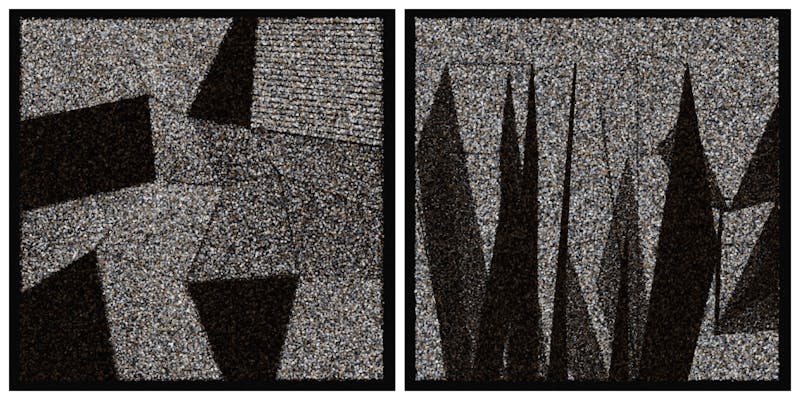
Concrete #57 and #353
Concrete outputs can be broadly categorized into five different styles dedicated to some of the artists who worked with Viksjø. In order of rarity, these styles are Sitter (0.31%), Weidemann (2%), Nesjar (18%), Tandberg (30%), and Haaland (50%).
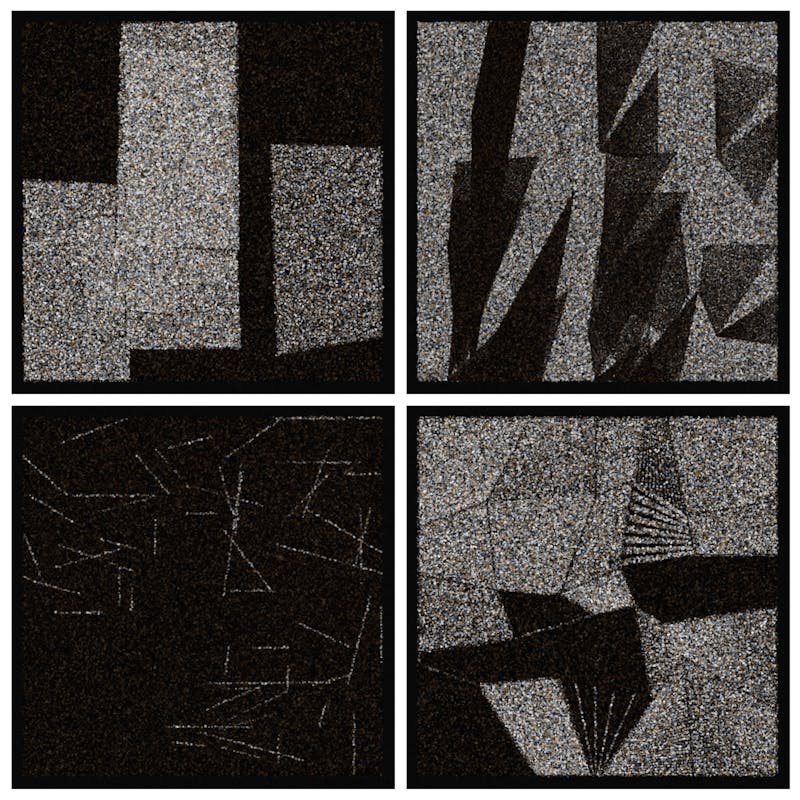
Concrete #335 in the style of Tandberg, #138 in the style of Nesjar, #65 in the style of Weidemann, and #551 in the style of Haaland
It follows that, in terms of rarity, the two most desirable pieces from the collection are #525 (last sold for 1,650 tez) and #452 (never sold) - together they constitute the only two outputs in the Sitter style.
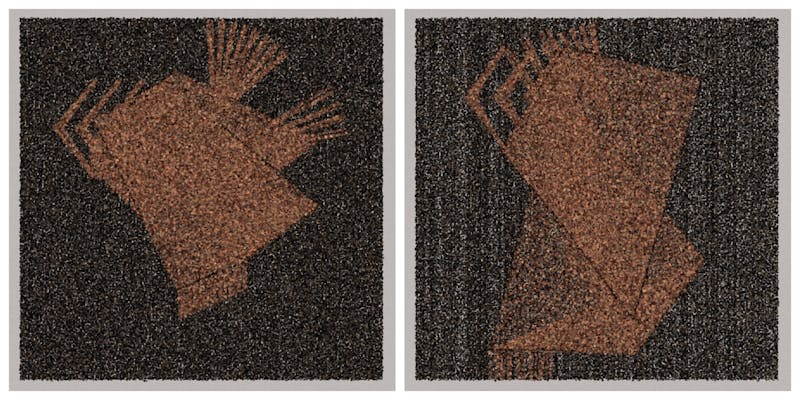
Concrete #452 and #525
Potential collectors should be aware that there were some instances of batch mints in the Concrete collection. During the early fxhash beta stage, it was possible for someone minting with bots to generate more than one mint with the same hash. Since the hash determines outputs, this created identical versions. These can be easily identified in the marketplace by a note above the item number reading WARNING: DUPLICATE.

Duplicate outputs
It’s hard to say how the market will treat these duplicates over time. So far, they’ve generally sold at floor price, but it’s not hard to imagine a future where they could be considered desirable artifacts from the early beta era of fxhash. As always, I think it’s important to choose a piece that resonates with you.
Personally, out of the 9,000+ collections on fxhash, Concrete remains on my list of favorites. The blending of sculpture and architecture, the inspiration behind the collection, and the masterful execution by Andreas Rau all stand out as particularly impressive achievements.